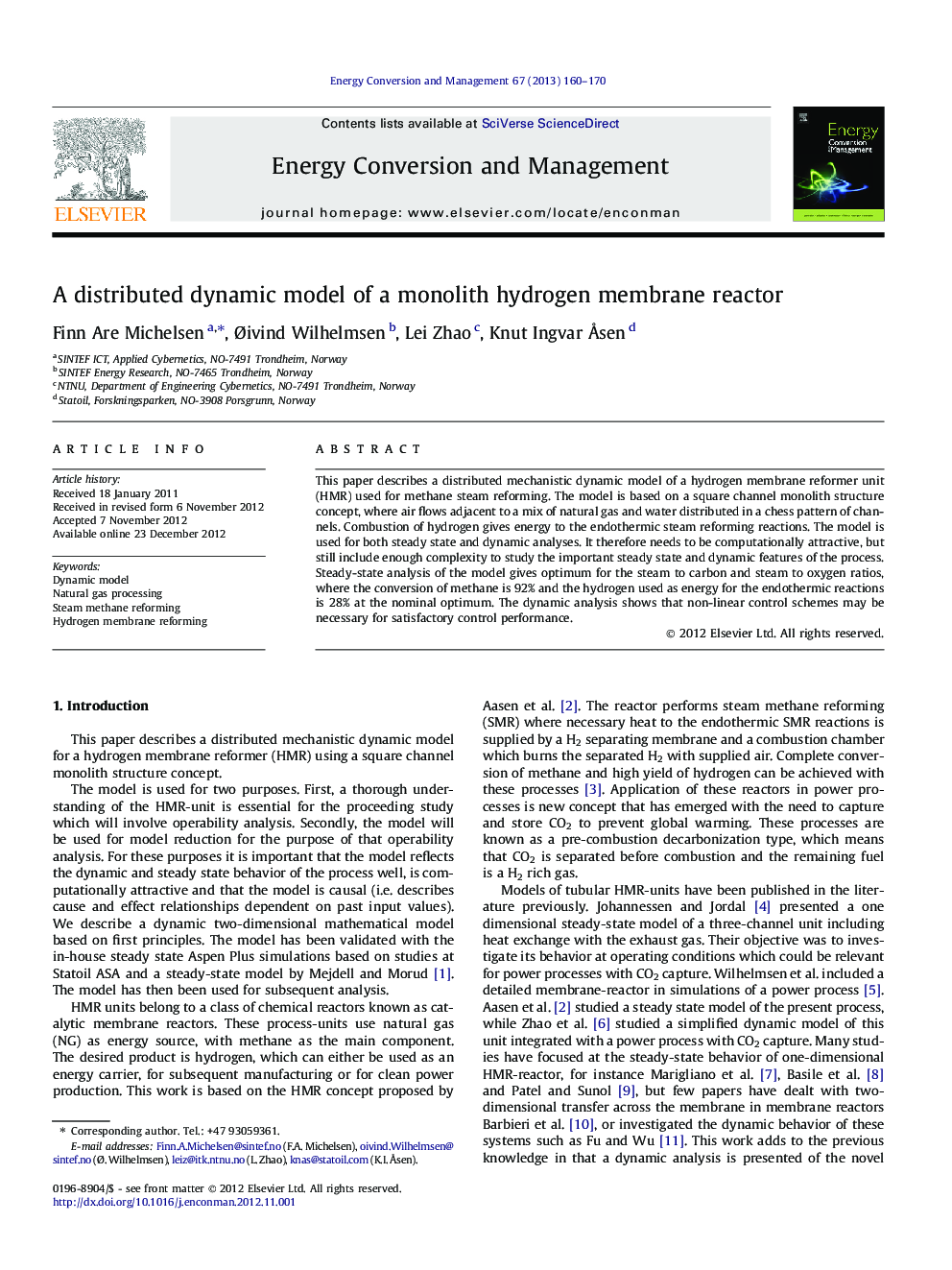| Article ID | Journal | Published Year | Pages | File Type |
|---|---|---|---|---|
| 765727 | Energy Conversion and Management | 2013 | 11 Pages |
This paper describes a distributed mechanistic dynamic model of a hydrogen membrane reformer unit (HMR) used for methane steam reforming. The model is based on a square channel monolith structure concept, where air flows adjacent to a mix of natural gas and water distributed in a chess pattern of channels. Combustion of hydrogen gives energy to the endothermic steam reforming reactions. The model is used for both steady state and dynamic analyses. It therefore needs to be computationally attractive, but still include enough complexity to study the important steady state and dynamic features of the process. Steady-state analysis of the model gives optimum for the steam to carbon and steam to oxygen ratios, where the conversion of methane is 92% and the hydrogen used as energy for the endothermic reactions is 28% at the nominal optimum. The dynamic analysis shows that non-linear control schemes may be necessary for satisfactory control performance.
► We model a rigorous distributed dynamic model for a HMR unit. ► The model includes enough complexity for steady-state and dynamic analysis. ► Simulations show that the model is non-linear within the normal operating range. ► The model is useful for studying and handling disturbances such as inlet changes and membrane leakage.
